Chicopee Brook Flood Resilience Improvements
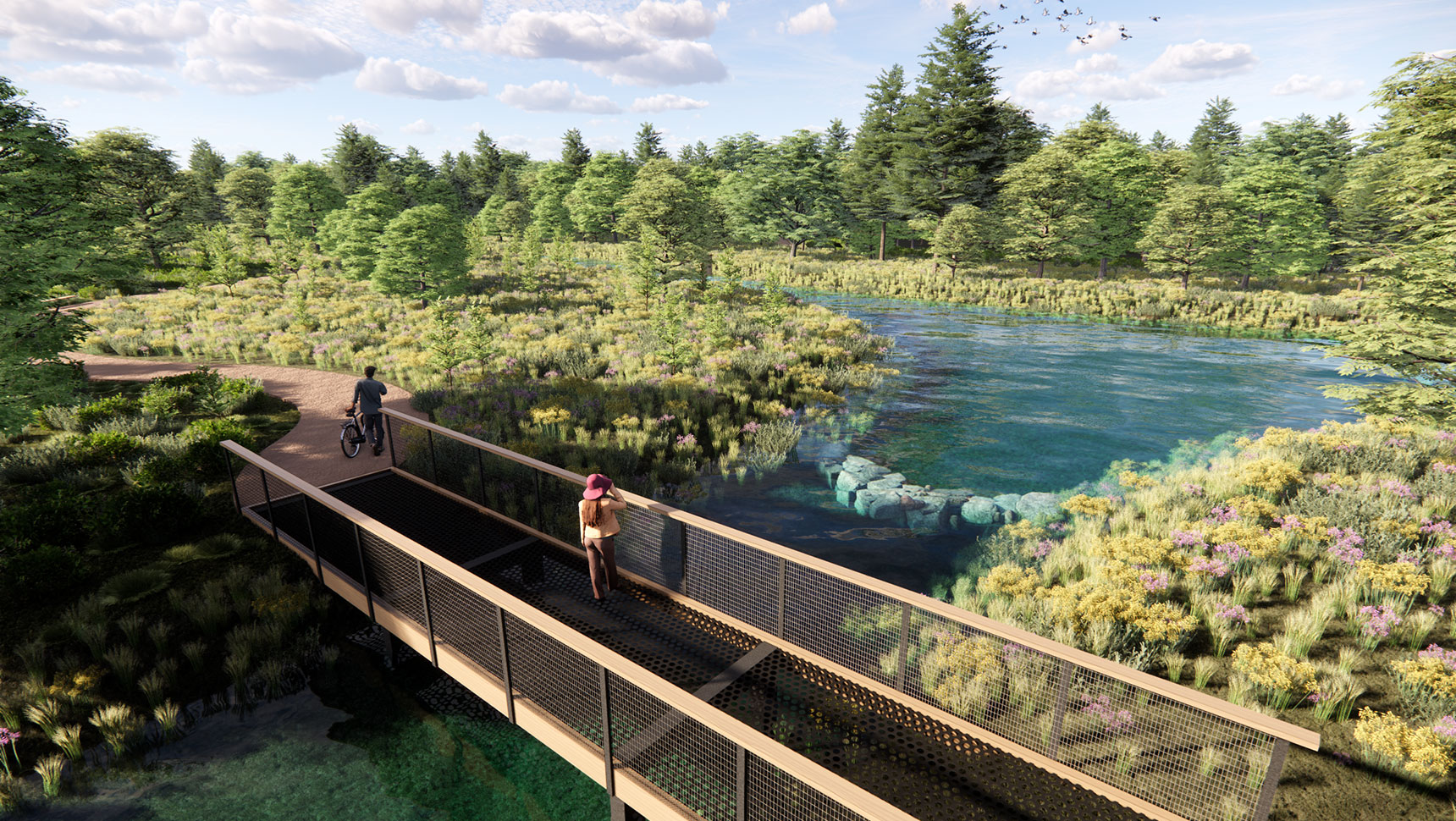

During the Town of Monson’s municipal vulnerability preparedness (MVP) planning process, flood risk reduction along Chicopee Brook was identified as one of the highest priority needs in the Town of Monson.
This was especially true in the downtown area and the reach that passes through a mapped environmental justice (EJ) population area before the Brook’s confluence with the Quaboag River in Palmer. With funding from the Commonwealth’s MVP Action Grant, the Town hired Fuss & O’Neill to complete a localized flood analysis and to develop preliminary conceptual designs for reducing flood risks along Chicopee Brook through a combination of both nature-based and innovative engineering approaches.
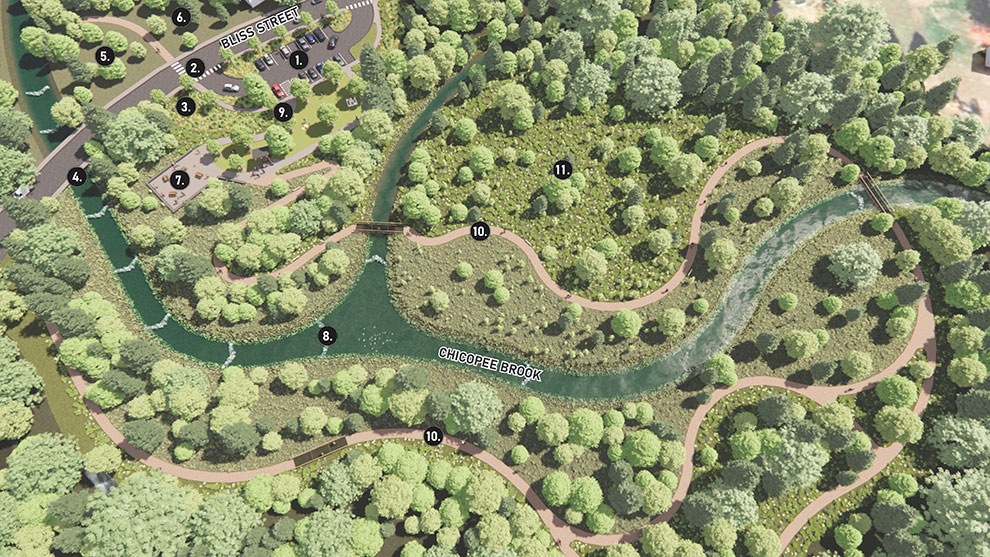
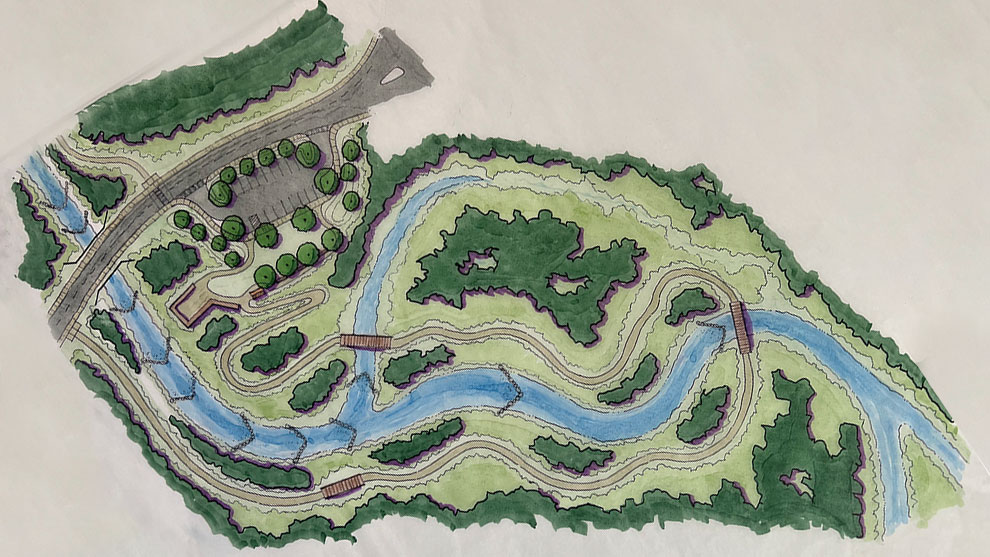
As part of this project, Fuss & O’Neill’s multidisciplinary team provided environmental planning, landscape architecture, hydrologic and hydraulic modeling, water resources engineering, transportation engineering, cost estimating services, and community outreach and engagement.
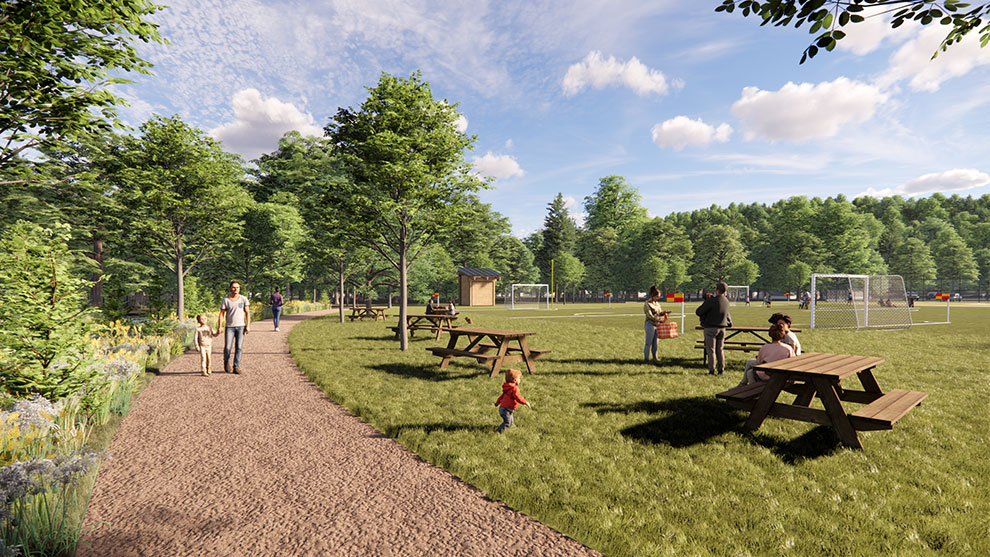
Our Landscape Architects developed illustrative conceptual plans for key flood resilience projects for priority sites along Chicopee Brook, including the Bunyan Road crossing, Cushman Field, Veterans Field, Bliss Street Dam, and Maple Street crossing.
Master planning design elements encompass various features such as a wildlife view overlook area; a trail network with a boardwalk; historic, culture, and educational signage; as well as recreational fields, comfort stations, and parking areas with green infrastructure design. This project included a large public involvement and community engagement aspect to participate in co-creating the vision for a resilient downtown Monson.
The hydrologic and hydraulic flood modeling of the Chicopee Brook corridor identified optimal strategies for protecting against the impacts of flooding through the implementation of nature-based solutions that ranged from rightsizing culverts to increasing flood capacity through floodplain reconnection and green infrastructure. We modeled proposed conditions under future climate conditions to:
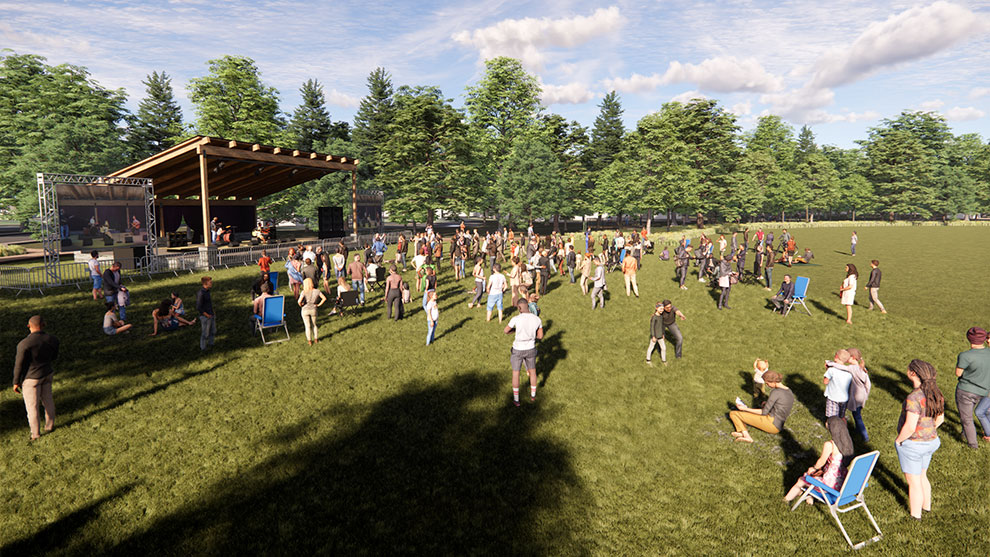
During the alternatives analyses and flood modeling conducted during this project, it became clear that, due to the nature of the river system, watershed, and surrounding topography at Bunyan Road, a planned structure replacement would require a total of more than 240 feet of culvert width to prevent future overtopping of the road. This solution would cost $12-13M. The project team considered the option of buyouts, but this was deemed impractical due to the continued need to access critical water supply wells in the area.
Instead, Fuss & O’Neill identified an alternative adaptation strategy that will reroute Bunyan Road south along the west side of Chicopee Brook to tie into an existing with no need to cross the river. This will allow for the full removal of the Bunyan Road crossing and all associated road embankment fill out of the floodplain, as well as the create the potential for removal of abandoned downstream railway embankments obstructing flows through the floodplain.
The broad wetland corridor that is currently bisected by Bunyan Road and the rail embankments could be restored, creating significant additional flood storage and improving the ecological health of the wetlands, all for an estimated cost closer to $3-5M.
The Town of Monson was awarded FY24 MVP Action Grant funding to begin design and permitting for one of the priority projects identified in the Phase 1 project.